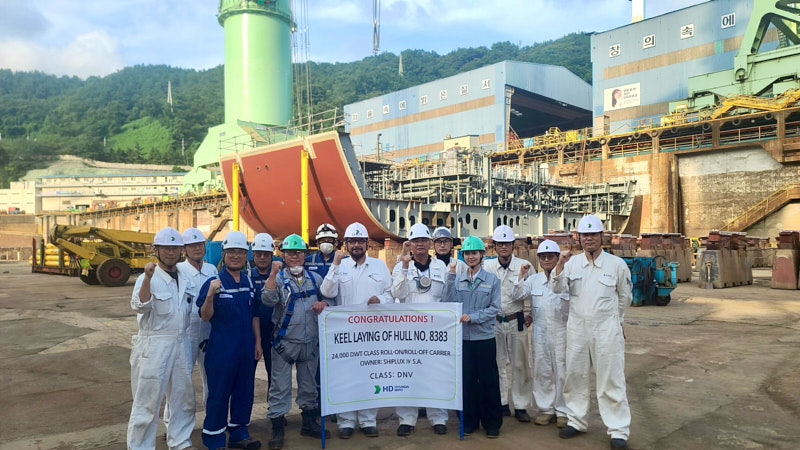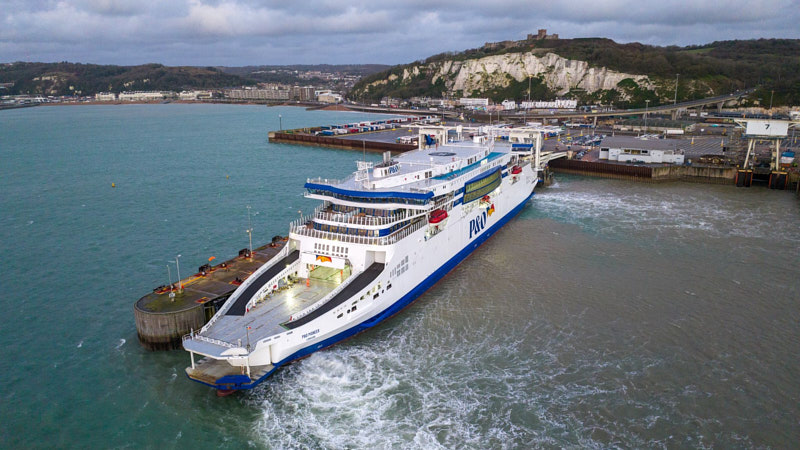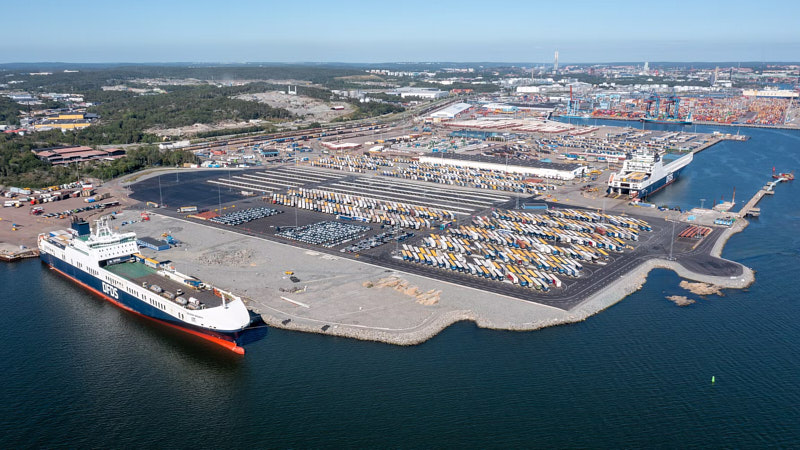
Hyundai Mipo Dockyard held a keel laying ceremony for the second of CLdN’s new G9e vessels at their shipyard in Ulsan, South Korea.
This new ship will feature two conventional main engines along with two large 6 MW shaft generators, which can be used for power generation or electric propulsion. The design offers a high degree of flexibility, allowing for future integration of new fuels, fuel cells, and battery technology.
Compared to CLdN’s largest vessels currently in operation, Celine and Delphine, the new ships will reduce CO₂ emissions by 40% while maintaining the same cargo capacity.
The delivery of both vessels is scheduled for the first half of 2025.
The picture shows representatives from Hyundai Mipo Dockyard, DNV (the classification society), and the Anglo-Eastern Technical Services Site Team, who are overseeing the process on behalf of CLdN.
Source: CLdN on Linkedin

P&O Ferries started running their ‘Turn-up and Go’ space charter with Irish Ferries on the Dover-Calais route, meaning ships will always be fully loaded for freight at peak, allowing freight to clear the port up to 25 per cent faster.
The agreement is good for the customers (no waiting) and it also lowers the carbon footprint of the cross-Channel route by always fully loading the vessels.
During the trial period, which began on 8th July, more than 12,000 freight vehicles were transferred between the two operators.

A brand new 144,000 square meter port terminal was inaugurated at the Port of Gothenburg. The investment, amounting to approximately 60 million EUR, has been under construction for the past six years and was made to meet the increased transportation needs of Swedish industry.
Named “Arendal 2”, the terminal is also part of the port’s strategy to concentrate its terminal operations in the outer port area, further from the city center, and with direct connections to the port’s road and rail infrastructure as well as the local growing industrial cluster.
Source and photo: Port of Gothenburg
